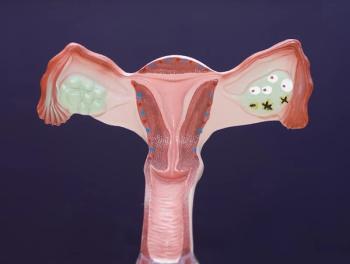
T-DXd Plus THP Bolsters Pathologic Responses in Early-Stage Breast Cancer
Neoadjuvant trastuzumab deruxtecan/THP showed an enhanced safety profile vs the standard-of-care regimen in patients with early-stage breast cancer.
Fam-trastuzumab deruxtecan-nxki (Enhertu; T-DXd) followed by paclitaxel, trastuzumab (Herceptin), and pertuzumab (Perjeta; THP) demonstrated a statistically significant improvement in pathologic complete response (pCR) vs standard-of-care dose-dense doxorubicin and cyclophosphamide followed by THP (ddAC-THP) in patients with high-risk, locally advanced, HER2-positive, early-stage breast cancer in the phase 3 DESTINY-Breast11 trial (NCT05113251), according to a news release from the drug’s developer, AstraZeneca.1
The secondary end point of event-free survival (EFS) was not mature at the time of analysis, with EFS data showing an early positive trend favoring T-DXd plus THP vs ddAC-THP. The trial will continue to follow EFS. Data from the trial will be presented at an upcoming medical meeting and shared with regulatory authorities.
“The clinically meaningful improvement in [pCR] and the safety data seen in [the phase 3] DESTINY-Breast11 [trial] highlight the potential of [T-DXd] to challenge the current standard of care in early-stage HER2-positive breast cancer,” Susan Galbraith, executive vice president of oncology hematology research and development at AstraZeneca, said in the press release.1 “[T-DXd] is already an important treatment option in the metastatic setting, and these data have the potential to allow this medicine to move into early stages of disease where cure is possible.”
Patients in the phase 3 DESTINY-Breast11 trial were randomly assigned to receive either T-DXd followed by THP or ddAC-THP. A third arm investigating T-DXd alone was closed following a recommendation by the independent data monitoring committee after a previous interim efficacy assessment.
The primary end point of the trial was pCR rate. Secondary end points included EFS, invasive disease-free survival, and overall survival.2
Neoadjuvant T-DXd followed by THP showed an enhanced safety profile vs ddAC-THP in patients with early-stage breast cancer. The safety profiles of T-DXd and THP in the DESTINY-Breast11 study were consistent with the known safety profiles of each individual agent, and no new safety signals were identified. Additionally, rates of interstitial lung disease (ILD) were similar across both study arms as assessed by an independent adjudication committee.
Discovered by Daiichi Sankyo, T-DXd is a specifically engineered HER2-directed DXd antibody drug conjugate jointly developed by AstraZeneca and Daiichi Sankyo.
“There are still many patients with early-stage breast cancer who do not achieve a [pCR] with treatment in the neoadjuvant setting, increasing the risk of disease recurrence,” Ken Takeshita, global head of research and development at Daiichi Sankyo, said in the news release.1 “These top-line results from DESTINY-Breast11 demonstrate that [T-DXd] followed by THP could offer patients with HER2-positive breast cancer a promising new treatment approach prior to surgery, setting more patients on a path toward a potential cure."
Patients were eligible for trial entrance if they were 18 years or older, had histologically confirmed HER2-positive early breast cancer, had an ECOG performance status of 0 or 1 at random assignment, had adequate organ and bone marrow function, had a left ventricular ejection fraction of 50% or greater within 28 days prior to random assignment, and had either formalin-fixed paraffin-embedded tissue block of 2 cores or 20 freshly cut serial tumor slides for HER2 assessment.
Those ineligible for trial enrollment included those with a prior history of invasive breast cancer, stage IV breast cancer, any primary malignancy within 3 years of trial initiation, a history of ductal carcinoma in situ, current or prior ILD or pneumonia, prior systemic therapy for breast cancer treatment, or previous anthracycline-, cyclophosphamide-, or taxane-based treatment.
References
- ENHERTU (fam-trastuzumab deruxtecan-nxki) followed by THP before surgery showed statistically significant and clinically meaningful improvement in pathologic complete response in patients with high-risk HER2-positive early-stage breast cancer in DESTINY-Breast11 phase III trial. News release. AstraZeneca. May 7, 2025. Accessed May 7, 2025. https://tinyurl.com/4sstj24x
- Trastuzumab deruxtecan (T-DXd) alone or in sequence with THP, versus standard treatment (ddAC-THP), in HER2-positive early breast cancer. ClinicalTrials.gov. Updated May 6, 2025. Accessed May 7, 2025. https://tinyurl.com/ye39mabw
Newsletter
Stay up to date on recent advances in the multidisciplinary approach to cancer.


















































































